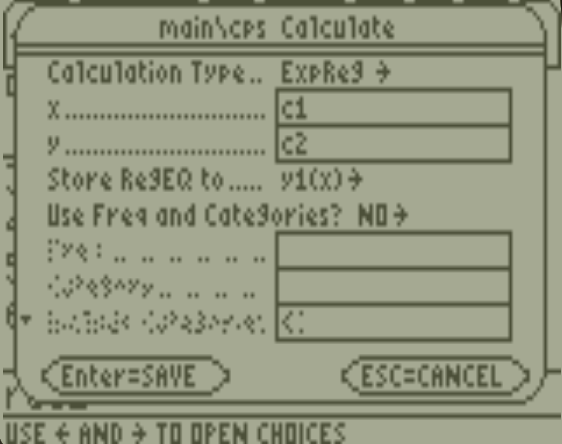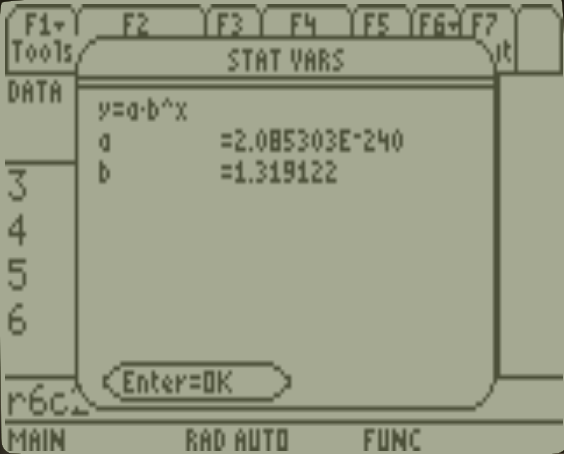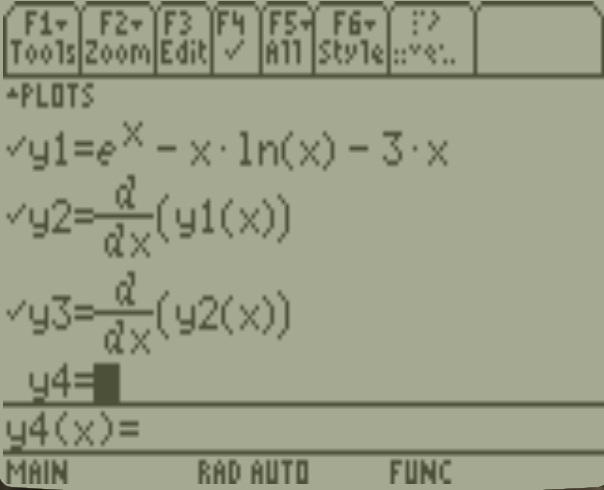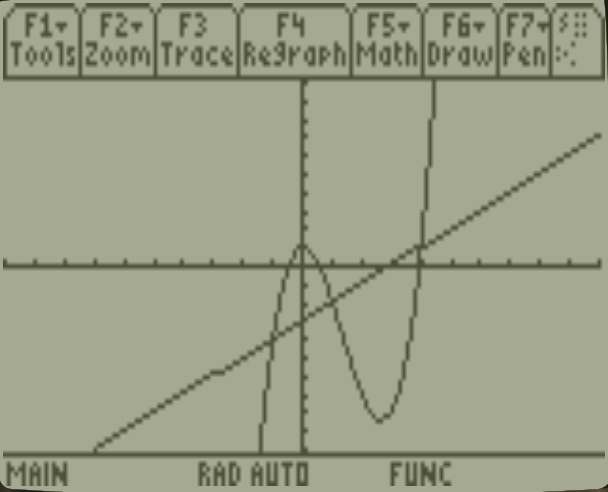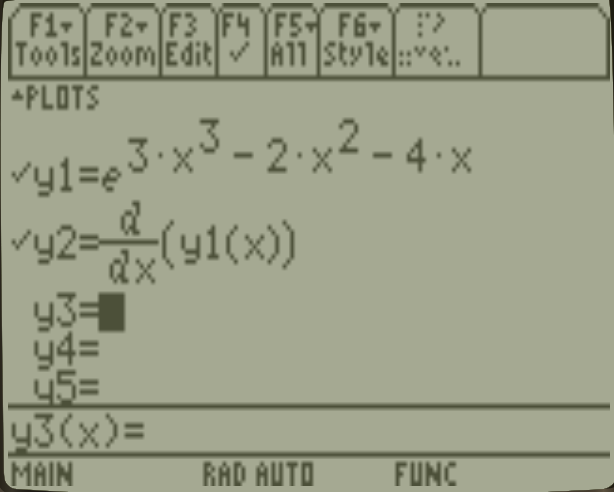MTH2205 Home
MTH 2205: Final Practice 2 (Part 2: Calculators are allowed)
Problem 1. Given the demand equation \(p=4200-1.5x^2\) and the supply equation \(p=x^2+200\), find the producer surplus when the market is in equilibrium. Round your answer to the nearest whole number.
(A) \(64000\) \(\quad\quad\) (B) \(128000\) \(\quad\quad\) (C) \(42667\) \(\quad\quad\) (D) \(85333\) \(\quad\quad\) (E) \(106667\)
(A) \(64000\) \(\quad\quad\) (B) \(128000\) \(\quad\quad\) (C) \(42667\) \(\quad\quad\) (D) \(85333\) \(\quad\quad\) (E) \(106667\)
Problem 2. If the interest rate is \(7\%\) compounded monthly, how much will \(\$8,000\) accumulate to after \(6\) years?
(A) \(\$12,175.79\) \(\quad\quad\) (B) \(\$12,160.84\) \(\quad\quad\) (C) \(\$11,360.00\) \(\quad\quad\) (D) \(\$11,428.83\) \(\quad\quad\) (E) \(\$10,690.20\)
(A) \(\$12,175.79\) \(\quad\quad\) (B) \(\$12,160.84\) \(\quad\quad\) (C) \(\$11,360.00\) \(\quad\quad\) (D) \(\$11,428.83\) \(\quad\quad\) (E) \(\$10,690.20\)
Problem 3. The table below shows the number of cell phone subscriptions in the U.S. in millions for the years from \(2003\) to \(2009\). Using the year \(2003\) as the reference year (year zero), find the exponential function that best fits the data, and from that function estimate the number of subscriptions in \(2012\).
\[\begin{array}{|c|c|}\hline
\mbox{Year}& \mbox{Millions of subscriptions}\\
\hline
2003 & 16.00\\
\hline
2005 & 33.80\\
\hline
2006 & 44.10\\
\hline
2007 & 55.30\\
\hline
2009 & 86.05\\
\hline\end{array}\]
(A) \(220.25\) million \(\quad\quad\) (B) \(215.13\) million \(\quad\quad\) (C) \(212.45\) million \(\quad\quad\)
(D) \(171.17\) million \(\quad\quad\) (E) \(116.55\) million
Problem 4. If \(s(t)=e^t-t\ln t-3t\) represents the position of a particle at time \(t\), find \(a(t)\), the acceleration of the particle at time \(t=3\).
(A) \(13.8883\) \(\quad\quad\) (B) \(19.7522\) \(\quad\quad\) (C) \(14.9869\) \(\quad\quad\) (D) \(17.3321\) \(\quad\quad\) (E) \(18.9831\)
(A) \(13.8883\) \(\quad\quad\) (B) \(19.7522\) \(\quad\quad\) (C) \(14.9869\) \(\quad\quad\) (D) \(17.3321\) \(\quad\quad\) (E) \(18.9831\)
Problem 5. Given the marginal cost function \(C'(x)=99x^2-24x\), find the cost of producing \(6\) items if the fixed cost is \(\$1500\).
(A) \(\$6696\) \(\quad\quad\) (B) \(\$3420\) \(\quad\quad\) (C) \(\$8196\) \(\quad\quad\) (D) \(\$4920\) \(\quad\quad\) (E) \(\$5196\)
(A) \(\$6696\) \(\quad\quad\) (B) \(\$3420\) \(\quad\quad\) (C) \(\$8196\) \(\quad\quad\) (D) \(\$4920\) \(\quad\quad\) (E) \(\$5196\)
Problem 6. Find the area bounded by \(y=x^3-4x^2+1\) and \(y=x-3\).
(A) \(\frac{253}{12}\approx 21.08\) \(\quad\quad\) (B) \(\frac{-125}{12}\approx -10.42\) \(\quad\quad\) (C) \(\frac{211}{12}\approx 17.58\) \(\quad\quad\)
(D) \(\frac{125}{12}\approx 10.42\) \(\quad\quad\) (E) \(\frac{157}{12}\approx 13.08\)
(A) \(\frac{253}{12}\approx 21.08\) \(\quad\quad\) (B) \(\frac{-125}{12}\approx -10.42\) \(\quad\quad\) (C) \(\frac{211}{12}\approx 17.58\) \(\quad\quad\)
(D) \(\frac{125}{12}\approx 10.42\) \(\quad\quad\) (E) \(\frac{157}{12}\approx 13.08\)
Problem 7. If a company sells an item for \(p=75-0.01x\) dollars each, and the cost of manufacturing \(x\) items is \(C(x)=1850+28x-x^2+0.001x^3\), find the production level which maximizes the profit. Round your answer to the nearest whole number.
(A) \(710\) \(\quad\quad\) (B) \(652\) \(\quad\quad\) (C) \(844\) \(\quad\quad\) (D) \(657\) \(\quad\quad\) (E) \(683\)
(A) \(710\) \(\quad\quad\) (B) \(652\) \(\quad\quad\) (C) \(844\) \(\quad\quad\) (D) \(657\) \(\quad\quad\) (E) \(683\)
Problem 8. If \(\$5000\) is invested at the interest rate of \(4.5\%\) compounded continuously, how long will it take for the amount to grow to \(\$25,000\)?
(A) \(33.27\) years \(\quad\quad\) (B) \(37.57\) years \(\quad\quad\) (C) \(34.77\) years \(\quad\quad\) (D) \(36.87\) years \(\quad\quad\) (E) \(35.77\) years
(A) \(33.27\) years \(\quad\quad\) (B) \(37.57\) years \(\quad\quad\) (C) \(34.77\) years \(\quad\quad\) (D) \(36.87\) years \(\quad\quad\) (E) \(35.77\) years
Problem 9. For which \(x\)-values does the graph of \(y=e^{3x^3-2x^2-4x}\) have a horizontal tangent line?
(A) \(x=1.215\) and \(x=-0.549\) \(\quad\quad\) (B) \(x=1.535\) \(\quad\quad\) (C) \(x=-0.481\) and \(x=0.925\)
(D) \(x=-0.869\), \(x=0\), and \(x=1.535\) \(\quad\quad\) (E) \(x=-0.758\) and \(x=-0.208\)
(A) \(x=1.215\) and \(x=-0.549\) \(\quad\quad\) (B) \(x=1.535\) \(\quad\quad\) (C) \(x=-0.481\) and \(x=0.925\)
(D) \(x=-0.869\), \(x=0\), and \(x=1.535\) \(\quad\quad\) (E) \(x=-0.758\) and \(x=-0.208\)
Problem 10. The half-life of a radioactive substance is \(2\) years. How many years does it take for \(4\) grams of the substance to decay to \(0.6\) grams? Round off your answer to two places after the decimal.
(A) \(5.47\) years \(\quad\quad\) (B) \(0.347\) years \(\quad\quad\) (C) \(2.21\) years \(\quad\quad\) (D) \(3.08\) years \(\quad\quad\) (E) \(4.27\) years
(A) \(5.47\) years \(\quad\quad\) (B) \(0.347\) years \(\quad\quad\) (C) \(2.21\) years \(\quad\quad\) (D) \(3.08\) years \(\quad\quad\) (E) \(4.27\) years
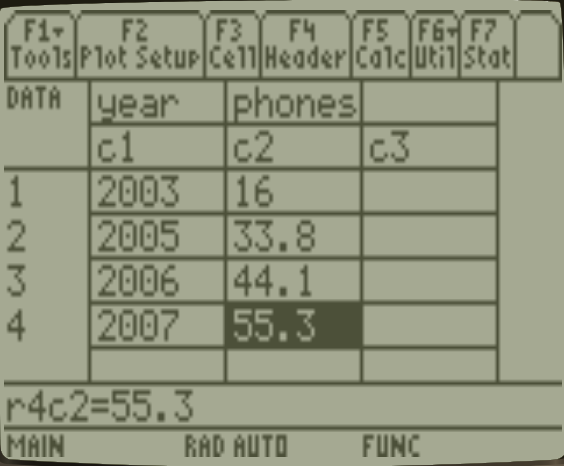 \(\quad\quad\)
\(\quad\quad\)

